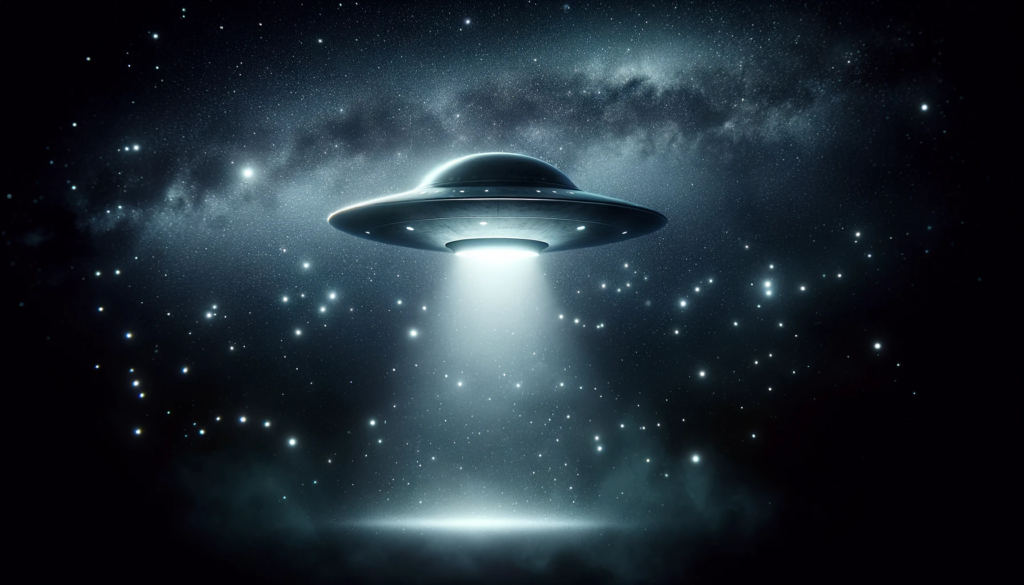
Introduction
The Enduring Enigma of Alien Encounters
In the vast expanse of the cosmos, the question of whether we are alone remains one of the most captivating and enduring mysteries. Throughout history, tales of unidentified flying objects (UFOs) and encounters with strange beings have sparked the human imagination, leading to a mix of fear, fascination, and skepticism. From ancient folklore to modern science fiction, the idea of extraterrestrial life continues to intrigue us. But beyond the realm of storytelling, there have been numerous incidents, reported by credible witnesses, that challenge our understanding of the world and hint at the possibility of alien visits to Earth. In this blog post, we delve into some of the most documented cases of alien encounters and explore the theories and scientific perspectives that surround these extraordinary claims.
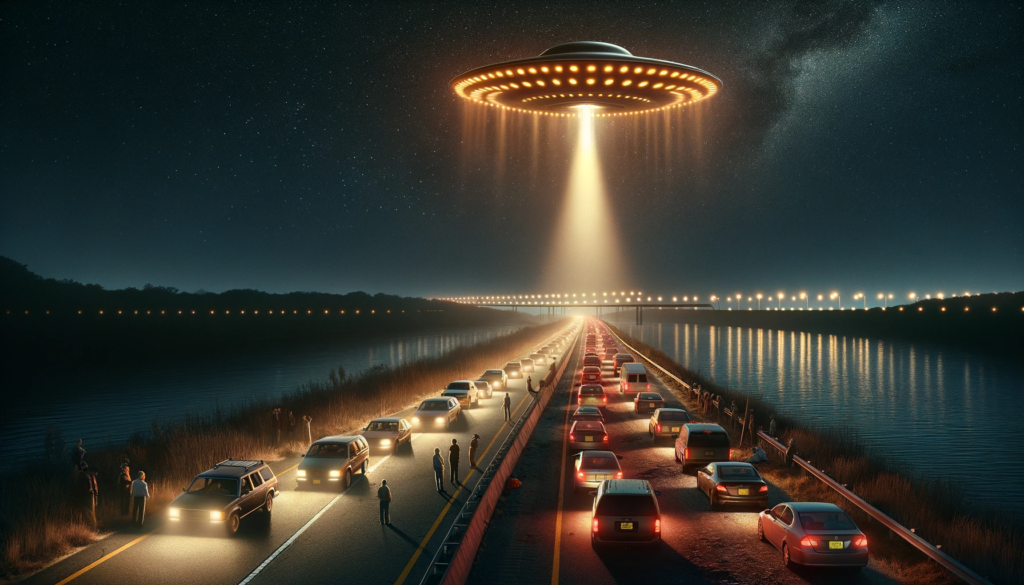
Section 1: The Most Credible Documented Cases
Witnessing the Unexplainable: Lights Above and Beyond
- The Lights Above the New Jersey Turnpike (2001) It’s not every day that a bustling highway comes to a standstill for reasons other than traffic. On the night of July 14, 2001, drivers along the New Jersey Turnpike found themselves pulling over, not because of roadblocks or accidents, but drawn by something far more mysterious. In the skies above, a series of strange orange and yellow lights formed a distinct V shape, captivating the onlookers. Among the witnesses was Lt. Daniel Tarrant of the Carteret Police Department, confirming the event’s validity. Despite initial denials from air traffic controllers, the New York Strange Phenomena Investigators (NY-SPI) later revealed FAA radar data corroborating the UFO sightings, adding a layer of intrigue to the already baffling event.
- The USS Nimitz Encounter (2004) In a scenario that seems straight out of a sci-fi movie, the crew of the USS Nimitz encountered an object that defied all known aviation mechanics. Off the coast of San Diego, a white, Tic Tac-shaped object displayed astonishing aerial capabilities, seemingly mocking the laws of physics. Navy pilots, seasoned in aerial phenomena, were baffled by its ability to move three times the speed of sound and its apparent indifference to gravity. The incident, recorded and widely publicized, remains one of the most compelling pieces of visual evidence in UFO history.
- O’Hare International Airport Saucer (2006) On an ordinary day at Chicago’s O’Hare International Airport, employees spotted an extraordinary sight – a metallic, saucer-shaped craft hovering eerily. This object wasn’t just witnessed by a handful of people but by a group of United Airlines staff, from pilots to supervisors. Its sudden vertical ascent, leaving a clear hole in the clouds, was as mystifying as its appearance. Despite this, the Federal Aviation Administration dismissed it as a weather phenomenon, a conclusion that many found unsatisfactory given the detailed eyewitness accounts.
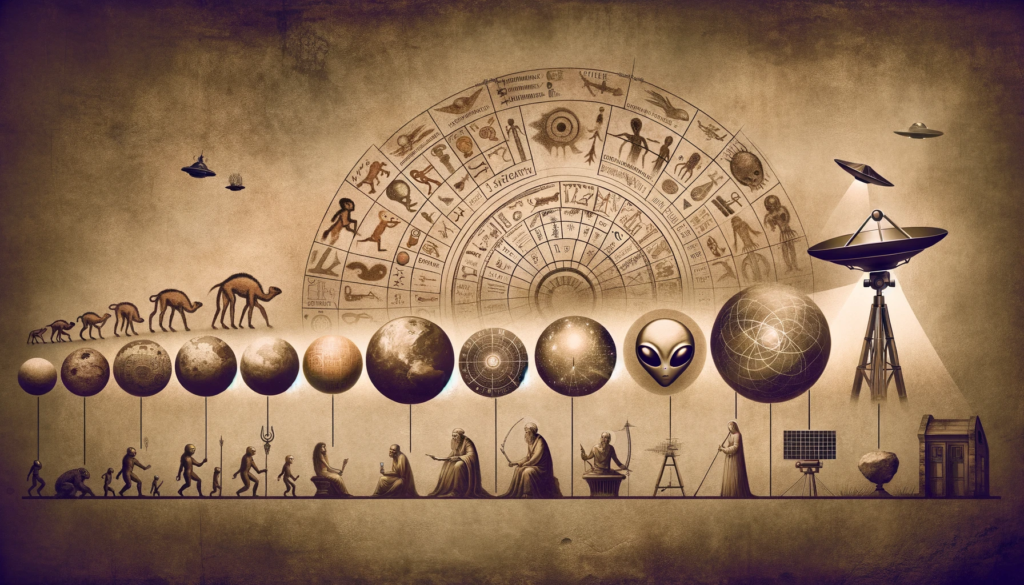
Section 2: Evolution of Theories on Extraterrestrial Visits
From Myth to Modern Science: Tracing the Path of Extraterrestrial Theories
The human fascination with extraterrestrial life is not a product of the modern era; it dates back to ancient civilizations. Our ancestors looked up at the stars and wondered about their place in the cosmos, often attributing mysterious phenomena to celestial beings or gods. This section explores how our understanding and theories about extraterrestrial visits have evolved over time, influenced by cultural shifts and scientific advancements.
- Ancient Interpretations In ancient times, unexplained celestial events were often interpreted as divine or supernatural occurrences. Cave paintings, hieroglyphs, and ancient texts from cultures around the world depict celestial beings and crafts, suggesting that our ancestors believed in visitations from the skies. These interpretations were deeply embedded in the mythologies and religions of the time, reflecting a human tendency to ascribe meaning to the unknown.
- Medieval and Renaissance Views During the medieval and Renaissance periods, the interpretation of celestial phenomena took a more astrological and alchemical turn. Unidentified flying objects were often seen as omens or portents, interpreted through the lens of astrology. Art from these periods sometimes depicted celestial events as divine interventions or warnings.
- The Age of Science and Speculation The advent of modern science brought a significant shift in perspective. The development of telescopes and later, radio technology, expanded our understanding of the universe, leading to more grounded speculations about extraterrestrial life. This period saw the birth of science fiction, a genre that both reflected and fueled public interest in the possibility of alien life and technology.
- The Era of SETI and Scientific Inquiry With the establishment of projects like the Search for Extraterrestrial Intelligence (SETI), the search for alien life moved from the realm of speculation to scientific inquiry. SETI and similar initiatives use advanced technology to scan the cosmos for signs of intelligent life, embodying our continued quest to answer the question: Are we alone in the universe?
- The Digital Age: Global Discourse and Conspiracies The digital age has democratized access to information about UFO sightings and theories. The internet has become a hub for sharing experiences and hypotheses, leading to a global discourse on the topic. While this has led to greater awareness and interest, it has also given rise to numerous conspiracy theories, blurring the lines between fact and fiction.
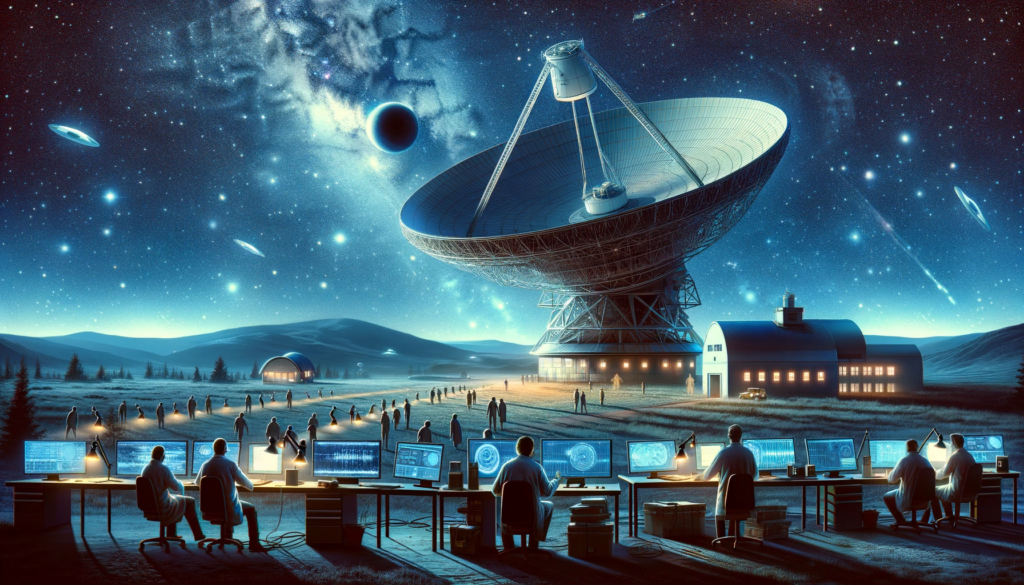
Section 3: The Scientific Stance on Extraterrestrial Life and UFO Sightings
In Search of Truth: The Intersection of Science and the Unexplained
The exploration of extraterrestrial life and UFO sightings has transitioned from the realm of folklore and conspiracy into the domain of scientific inquiry. This section delves into the current scientific perspective on these phenomena, examining how the academic and scientific communities approach the mysteries of the cosmos.
- Skepticism and the Demand for Empirical Evidence The scientific community, by its very nature, demands empirical evidence and rigorous methodology. This skepticism is not a denial of the possibility of extraterrestrial life but a call for substantiated proof. Most scientists argue that while the universe is vast and the likelihood of life elsewhere is high, the evidence for visitations to Earth remains anecdotal and inconclusive.
- SETI and the Scientific Search for Life The Search for Extraterrestrial Intelligence (SETI) represents a significant leap in the scientific search for alien life. Using advanced radio telescopes, SETI scans the cosmos for signals that could indicate the presence of intelligent life forms. This methodical approach exemplifies the scientific community’s openness to the possibility of extraterrestrial intelligence, grounded in the principles of scientific research.
- UFOs in Scientific Discourse Unidentified Flying Objects (UFOs) have long been a subject of fascination and controversy. In scientific discourse, the focus is on identifying the unidentified: whether these objects are natural phenomena, misidentifications of man-made objects, or truly unexplainable. This approach seeks to demystify the sightings through empirical analysis rather than jumping to conclusions about their origins.
- The Role of Government and Institutional Research In recent years, governments and institutions have shown an increased willingness to investigate and publicly discuss UFO sightings. The release of military videos and reports has lent a new credibility to the study of these phenomena, encouraging scientific communities to take a closer look.
- The Future of Extraterrestrial Research The future of research into extraterrestrial life and UFOs is likely to be driven by advancements in technology and space exploration. Projects like the James Webb Space Telescope and missions to Mars may provide new insights, potentially bringing us closer to answering the age-old question of whether we are alone in the universe.
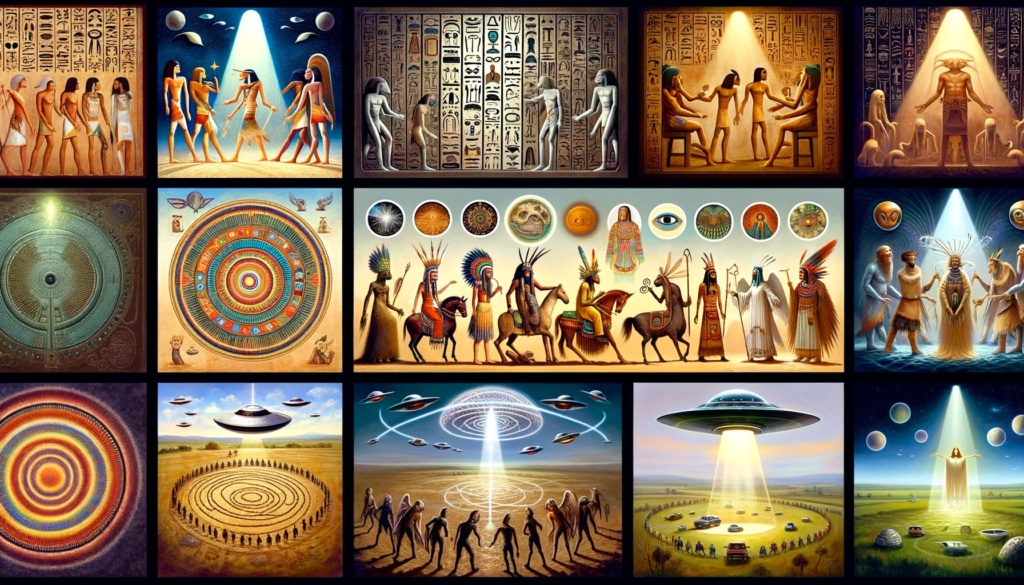
Section 4: Cultural Influence on Alien Encounter Perceptions
A Global Tapestry of Beliefs: Understanding Alien Encounters Through Culture
The perception and interpretation of alien encounters are deeply influenced by cultural and societal beliefs. This section explores how different cultures around the world have historically and contemporarily understood and depicted these enigmatic experiences.
- Ancient Civilizations and Celestial Beings In ancient cultures, such as those of Egypt and Mesopotamia, celestial beings often played significant roles in mythology and religion. These early interpretations of the stars and sky phenomena frequently featured in hieroglyphics and ancient texts, suggesting a belief in beings from the heavens influencing human affairs.
- Indigenous Perspectives and Sky Spirits Many indigenous cultures, including Native American tribes, have long-standing traditions and stories about sky spirits or star beings. These narratives often serve as explanations for the mysteries of the universe, blending spirituality with a deep connection to the natural world.
- Medieval and Renaissance Interpretations In medieval Europe, celestial events were often seen as divine messages or omens. Art from this period sometimes depicted otherworldly visitations, reflecting a blend of religious beliefs and a burgeoning curiosity about the natural world.
- Modern Interpretations: Science Fiction and Pop Culture In contemporary times, the influence of science fiction and pop culture is undeniable in shaping perceptions of alien encounters. From movies and television shows to books and comics, these mediums have created a modern mythology around extraterrestrial beings, often reflecting societal fears and aspirations.
- The Role of Media and the Internet The media and the internet have played significant roles in disseminating information and theories about alien encounters. The proliferation of online forums and social media has allowed for a global exchange of ideas and experiences, creating a collective narrative that transcends geographical and cultural boundaries.
- Impact of Personal Beliefs and Experiences Personal beliefs and experiences significantly shape how individuals interpret alien encounters. Those with a strong belief in the paranormal or extraterrestrial life are more likely to interpret ambiguous phenomena as evidence of alien visitation.
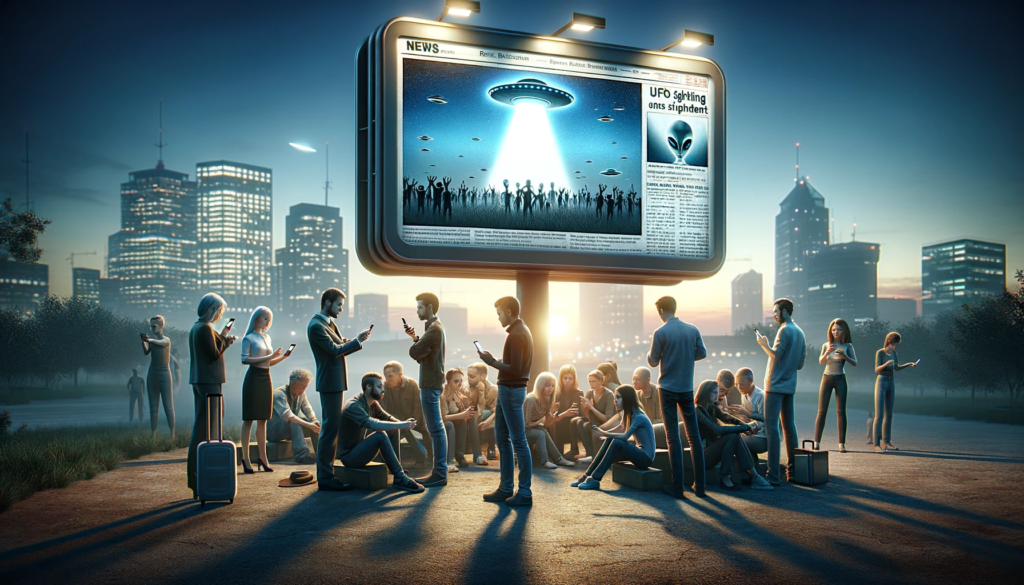
Section 5: Personal and Societal Impact of Alien Encounters
Beyond the Stars: The Earthly Impact of Cosmic Mysteries
Alien encounters, whether real or perceived, have a profound impact both on individuals and on society as a whole. This section explores the range of effects these encounters have, from personal transformations to shifts in societal perspectives.
- Personal Transformations and Beliefs For those who claim to have experienced alien encounters, the impact can be life-changing. These individuals often report a profound alteration in their worldview, feeling a deep sense of connection with the cosmos or a newfound purpose. In some cases, these experiences can lead to the development of new philosophical or spiritual beliefs.
- Skepticism and Ridicule On the flip side, individuals reporting alien encounters often face skepticism and ridicule, which can lead to social ostracization and emotional distress. The fear of not being believed can be a significant burden, impacting their mental health and well-being.
- Influence on Popular Culture and Media Alien encounters have significantly influenced popular culture and media. Movies, TV shows, books, and documentaries often draw inspiration from reported sightings and encounters, shaping public perception and feeding into the cycle of fascination and skepticism.
- Societal Debate and Scientific Inquiry Reports of alien encounters fuel ongoing societal debates about the existence of extraterrestrial life and the nature of the universe. These discussions often encourage scientific inquiry, pushing researchers to explore and understand unexplained phenomena.
- Global Community and Shared Narratives The global interest in alien encounters has created a community of enthusiasts and believers who share stories and theories. This communal aspect fosters a sense of belonging among those who are intrigued by the possibility of life beyond Earth.
- Policy and Governmental Responses High-profile alien encounter reports have occasionally prompted governmental responses, leading to official investigations and the release of classified documents. These actions can validate the experiences of some individuals and influence public opinion on the matter.
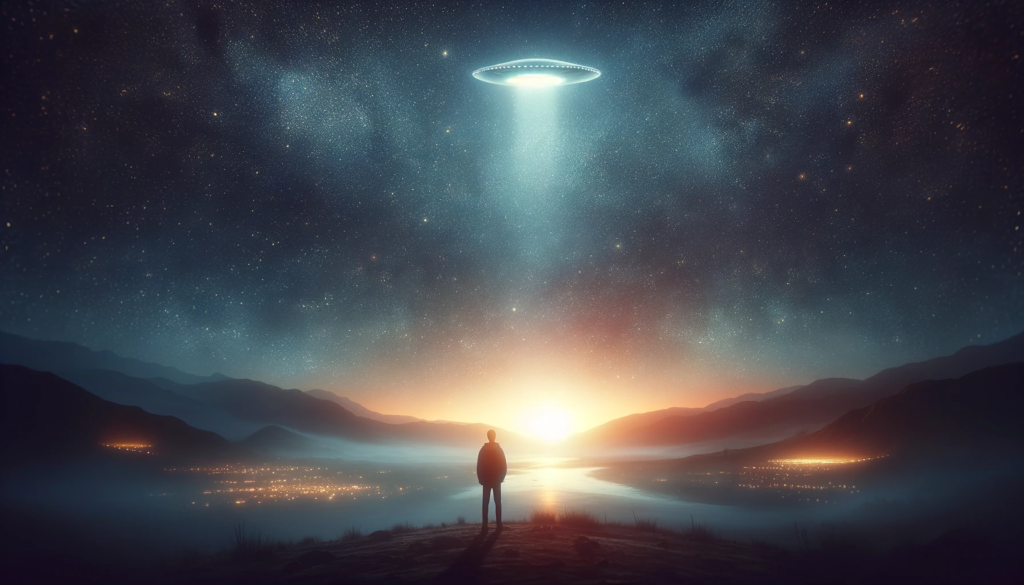
Conclusion
Embracing the Mystery: Our Continuing Journey Through the Cosmos
As we delve into the stories, theories, and research surrounding alien encounters, one thing becomes abundantly clear: the human fascination with the unknown is as boundless as the universe itself. The tales of sightings and encounters, whether rooted in fact or fiction, speak to a deeper, intrinsic yearning to understand our place in the cosmos and to connect with something greater than ourselves.
The journey through the annals of alien encounters is a testament to the human spirit’s insatiable curiosity. From the ancient depictions of celestial beings to the modern-day SETI research, our quest for understanding continues to evolve, driven by both scientific inquiry and imaginative speculation.
As we gaze up at the night sky, the mysteries of the universe remain largely uncharted, an endless frontier of possibilities and wonders. The search for extraterrestrial life, whether it leads to groundbreaking discoveries or unanswered questions, is a journey that fuels both our science and our stories.
In the end, the exploration of alien encounters is not just about looking outwards to the stars but also inwards at our own nature. It challenges us to think, to question, and to dream. And in this unending quest, perhaps the true discovery is the journey itself.
